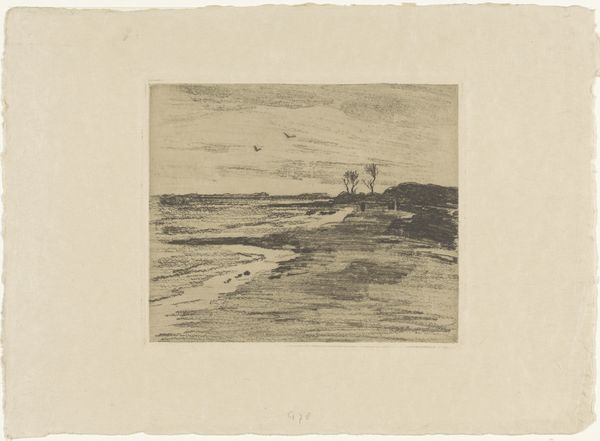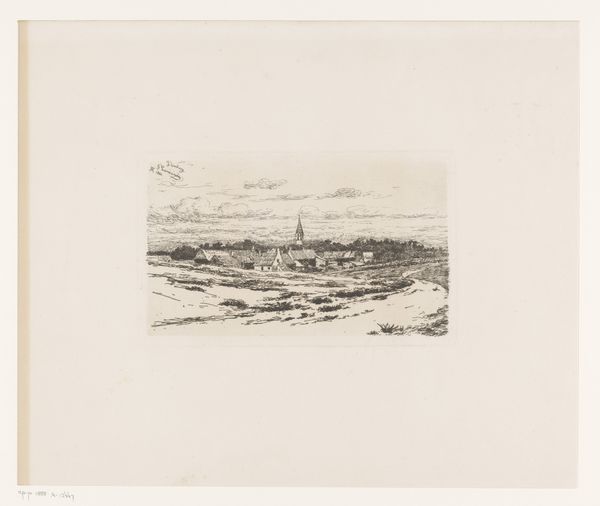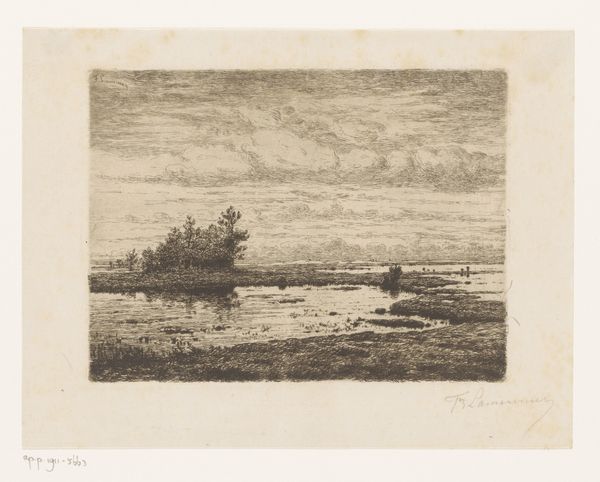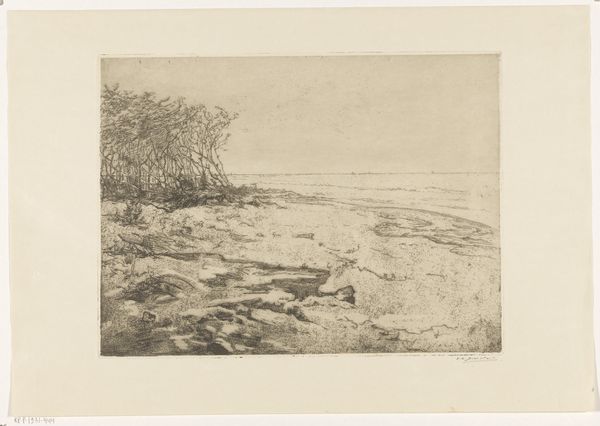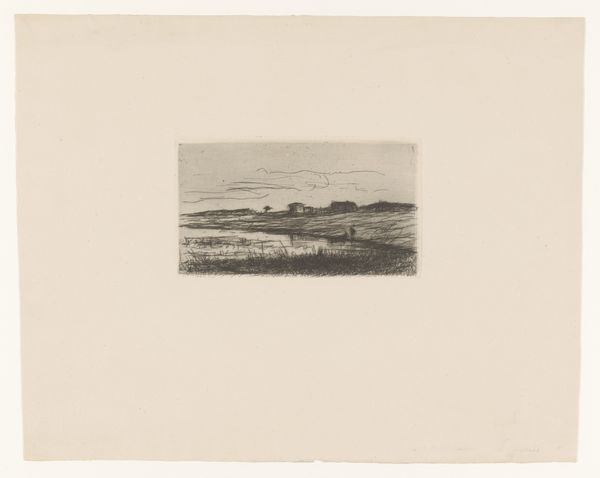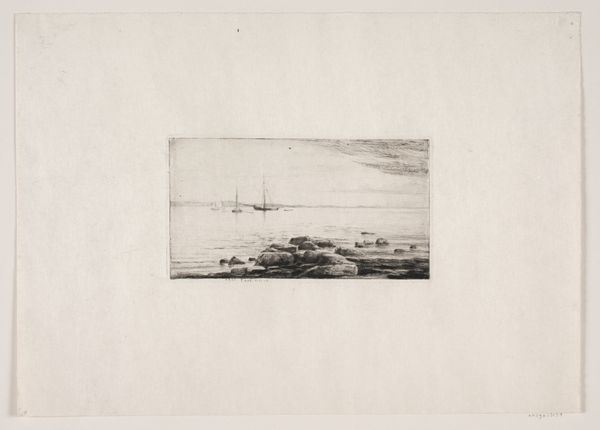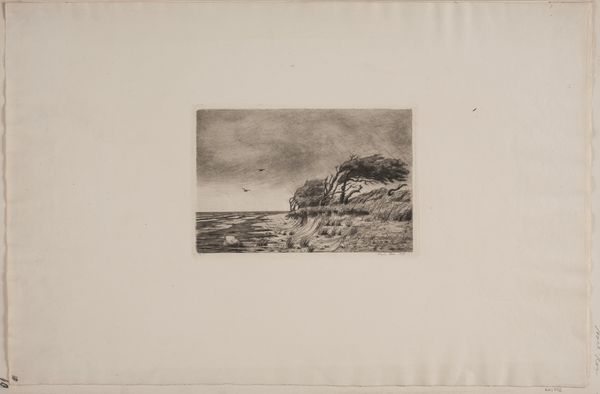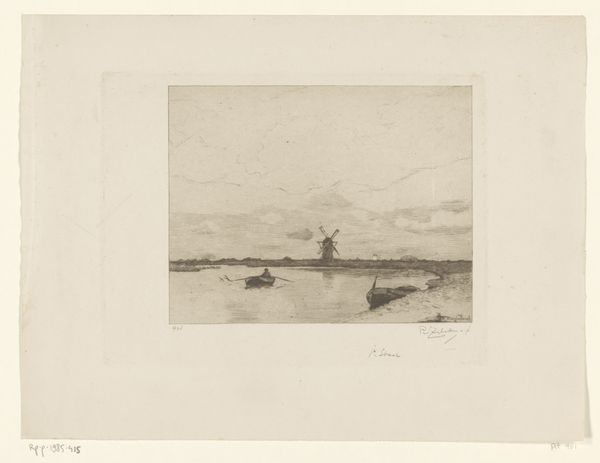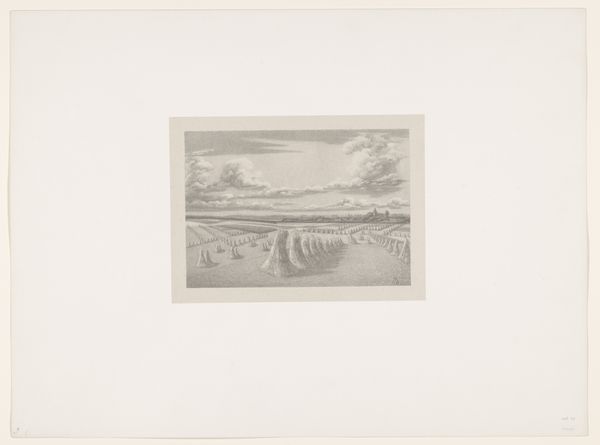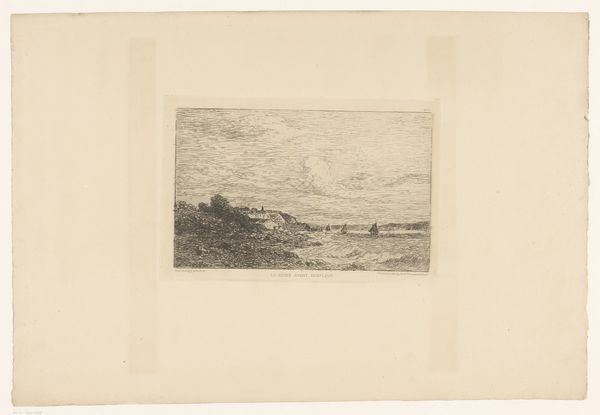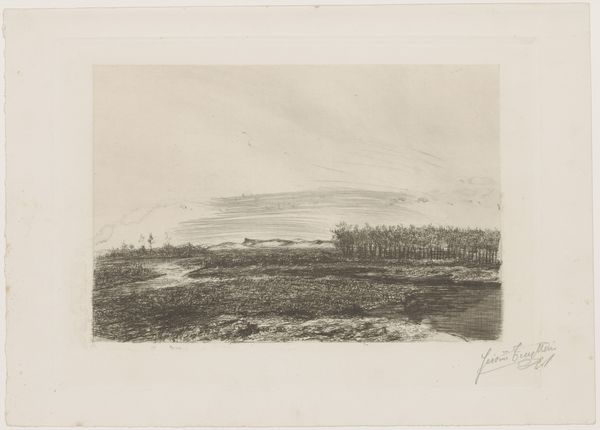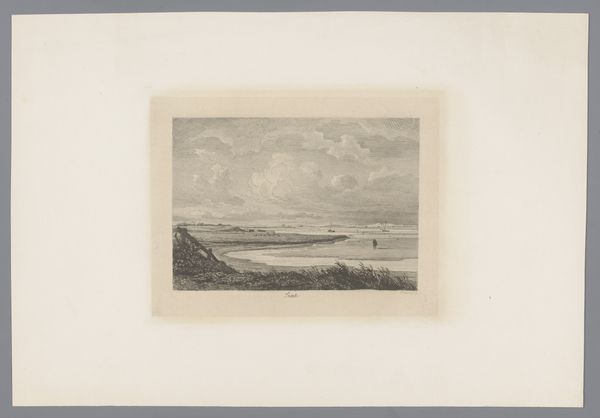
print, etching
# print
#
impressionism
#
etching
#
landscape
#
realism
Dimensions: 150 mm (height) x 114 mm (width) (billedmaal)
Curator: Immediately, the granular texture pulls you into the rugged beauty of this etching. It's a landscape by John Lübschitz titled "Kattegat," created in 1889. It depicts a coastal scene, currently held at the SMK, the National Gallery of Denmark. Editor: It’s melancholic, almost austere. The stark contrast between the dark rocks in the foreground and the pale sky gives it a weighty feel, as though nature's indifference is on full display. The scale feels very intimate, which, combined with the bleakness, makes for a pretty powerful statement, I'd say. Curator: That weight, I believe, speaks to the intense labor required for printmaking during this period. Each line meticulously etched contributes to the overall mood and texture. Notice the granular pattern that could reflect a comment on the burgeoning industrial landscape overshadowing natural settings, right? Editor: Perhaps. I see it more in the balance Lübschitz achieves between the solid mass of the rocks and the ephemeral quality of the water and sky. The contrast is striking— the ephemeral, lightly drawn sails and the dense rock arrangements on the shore! Curator: But isn't that contrast inherent in the etcher's craft? To translate nature into a reproducible image requires mediating between the observed world and the constraints and capabilities of the medium, in this case, copper or zinc. It allows many more prints for broader sales for example. Editor: Indeed. And in Lübschitz’s capable hands, this particular technique, etching, really emphasizes that inherent graphic quality. Look at the rhythmic use of lines to suggest movement in the water, which then is held back by these clusters of dense rocks. I am just fascinated by the distribution of light. It seems like an emotionally very intelligent depiction, almost Romantic. Curator: And considering its accessibility via printmaking, one might ask: To whom was this image intended to appeal? The rising bourgeois class? Perhaps it romanticizes nature to reflect longing for pre-industrial pastoral serenity, as more folks transitioned to city jobs. Editor: A fascinating thought. Ultimately, "Kattegat" uses careful composition and tonal contrast to explore deeper emotional and aesthetic territories. Its enduring impact relies on its elegant deployment of forms to trigger associations far exceeding simple depiction, whatever social bracket you view it from! Curator: Absolutely. Looking at it now, considering the impact of print media on society and cultural diffusion, I'm compelled by its intersection of production and perception. Editor: And I'm just moved by its raw emotional presence that it manifests within such rigid stylistic boundaries. What a satisfying artistic encounter.
Comments
No comments
Be the first to comment and join the conversation on the ultimate creative platform.
